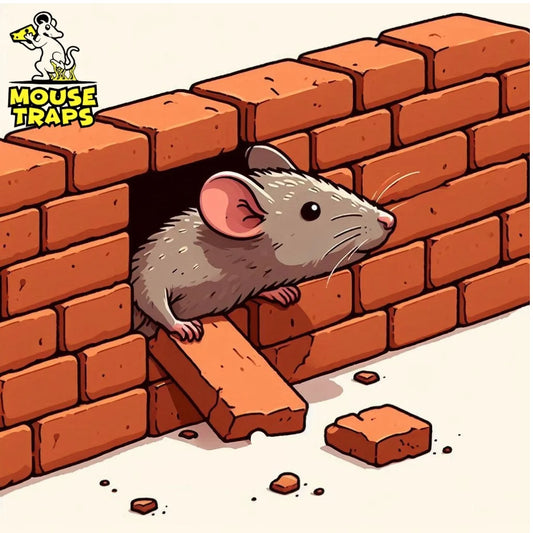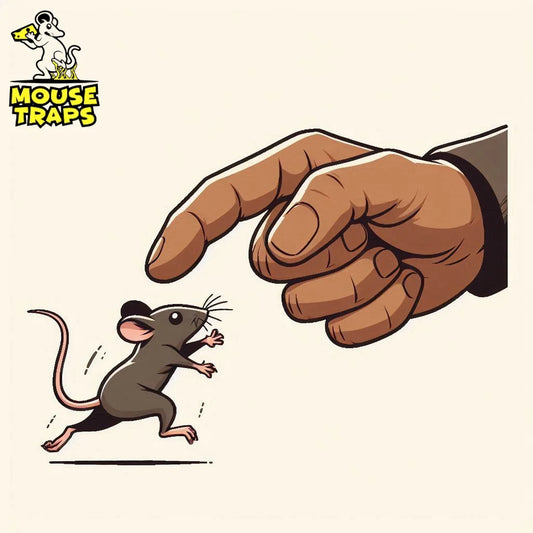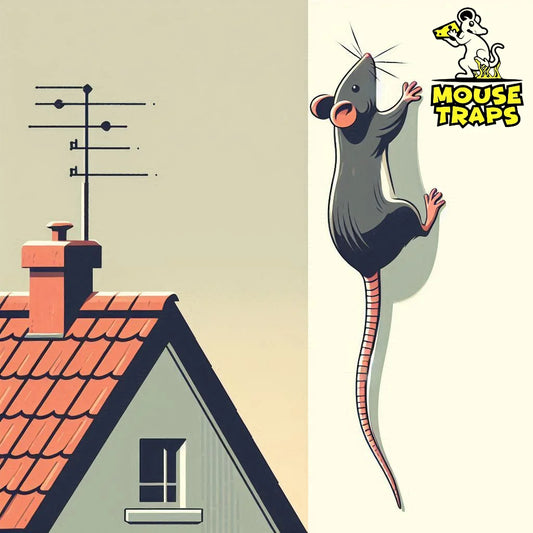Introduction
Curious gardeners often ponder, "Can I use plant-based deterrents, such as mint or lavender, to repel rats in the garden?" Rats can wreak havoc on gardens, devouring crops and causing damage. While chemical solutions exist, many prefer natural remedies. Lets investigate how mint and lavender well, as other plant based choices work in keeping rats away.
The Effectiveness of Mint and Lavender
Mint: A Potent Deterrent

Mint's strong aroma is often touted as a rat repellent. Here's why it works:
- Repugnant Scent: Rats find the scent of mint overwhelming, deterring them from entering areas where it's prevalent.
- Versatility: Mint can be planted around garden borders or in pots, providing flexibility in its application.
- Low Maintenance: Mint is easy to grow and requires minimal care, making it an ideal deterrent for busy gardeners.
Lavender: A Fragrant Barrier

Lavender's delightful fragrance serves more than aesthetic purposes:
- Calming Effect: While humans find lavender's scent soothing, rats are repelled by it, making it an effective deterrent.
- Visual Appeal: The purple flowers of lavender enhance the charm of gardens. Keep pests away at the time.
- Long-lasting: Lavender plants are perennial, providing continuous protection against rats year after year.
Companion Planting for Rat Repellency
Expanding beyond mint and lavender, companion planting offers a holistic approach to pest management:
- Marigolds: Known for their pungent scent, marigolds deter rats and other garden pests.
- Rosemary: This fragrant herb not only enhances culinary dishes but also repels rats when planted near vulnerable areas.
- Daffodils: Daffodils are appreciated for their flowers. Also serve as useful plants, in gardens due, to the compounds they contain which deter rodents.

Implementing Plant-Based Deterrents
Placement and Density
Strategic placement and density of deterrent plants are crucial for optimal effectiveness:
- Perimeter Planting: Surround the garden with deterrent plants to create a barrier against rat intrusion.
- High-Density Areas: Concentrate planting near areas prone to rat activity, such as compost bins or storage sheds.
Maintenance and Renewal
Maintaining plant-based deterrents ensures their continued efficacy:
- Pruning: Regularly prune mint and lavender to release their potent scents and prevent overgrowth.
- Replenishment: Replace aging or depleted plants to maintain a robust defense against rats.
Complementary Measures
Enhance the effectiveness of plant-based deterrents with additional measures:
- Proper Waste Management: Dispose of garden waste promptly to eliminate potential rat habitats.
- Secure Food Sources: Store harvested fruits and vegetables in sealed containers to prevent rat access.
- Natural Predators: Encourage the presence of predators like owls or snakes, which prey on rats, to deter infestations.
Note:
All these plan based repellents are useful at some degree, but when rats intrude your garden you should take strict decisions to get rid of them. The best and the most effective way to deter rats is using traps. For rats in a garden you can use Live Humane Mouse / Rats traps or Sticky Glue Mouse / Rats Pads as these the best of all traps available in the market, a link to purchase and some details on these traps are given below;
Live Humane Mouse Traps:
- Live humane mouse traps are designed to capture rodents without harming them.
- These traps typically consist of a small, enclosed box or cage with a mechanism that closes the door once the rodent enters.
- Many humane traps are reusable and can be easily cleaned and reset for future use.

Benefits:
- Ethical Treatment: Live humane traps offer a humane and ethical approach to rodent control, allowing for the capture and release of rats without causing them harm.
- Safe for Pets and Wildlife: Unlike traditional snap traps or rodenticides, humane traps pose no risk to pets, birds, or other wildlife that may inadvertently come into contact with them.
- Reusability: Many live humane traps are reusable, making them a cost-effective and environmentally friendly solution to rodent infestations.
- Non-Toxic: Live humane traps do not rely on poisons or chemicals, reducing the risk of secondary poisoning and environmental contamination.
Sticky Glue Mouse Pads:
- Sticky glue mouse pads, also known as glue traps, consist of a flat board coated with a strong adhesive.
- When a rodent steps onto the pad, it becomes stuck to the adhesive, preventing escape.
- Glue traps are typically disposable and designed for single-use.

Benefits:
- Ease of Use: Glue traps are easy to set up and require minimal maintenance. Simply place them in areas where rat activity is observed.
- Versatility: Glue traps can be placed both indoors and outdoors, making them suitable for use in gardens, sheds, and other outdoor structures.
- No Poison: Glue traps do not contain toxic chemicals or baits, making them a safer option for households with children or pets.
- Visible Results: Glue traps provide a visual indication of rodent activity by capturing rats directly onto the sticky surface.
FAQs (Frequently Asked Questions)
-
Are mint and lavender safe for other garden plants?
- Yes, mint and lavender are generally safe for surrounding plants and can even benefit nearby vegetation by deterring pests.
-
Do plant-based deterrents work for all types of rats?
- While plant-based deterrents can be effective against common rats, such as Norway rats and roof rats, their efficacy may vary against different species.
-
How often should I replant mint and lavender for optimal effectiveness?
- Mint and lavender should be replanted every 2-3 years to maintain their vigor and potency as rat repellents.
-
Can I use essential oils instead of live plants for rat deterrence?
- Live plants not offer protection, for your garden but also play a key role, in supporting its ecosystem unlike essential oils, which may only provide temporary relief.
-
Are there any plants that attract rats instead of repelling them?
- Certainly some types of plants such, as ivy or thick shrubs can provide environments, for rats unintentionally drawing them to the garden.
Conclusion
To sum up using methods, like mint and lavender as repellents can effectively keep rats away, from the garden. The strong scents of these plants act as barriers discouraging rats from coming to search for food or build nests. By knowing how rats behave planting deterrents and combining approaches gardeners can protect their crops and establish a pest free setting. So, to answer the question, "Can I use plant-based deterrents, such as mint or lavender, to repel rats in the garden?"—absolutely! By organizing and tending to your garden these natural remedies can help deter rats while also improving the aesthetics and health of your space.




